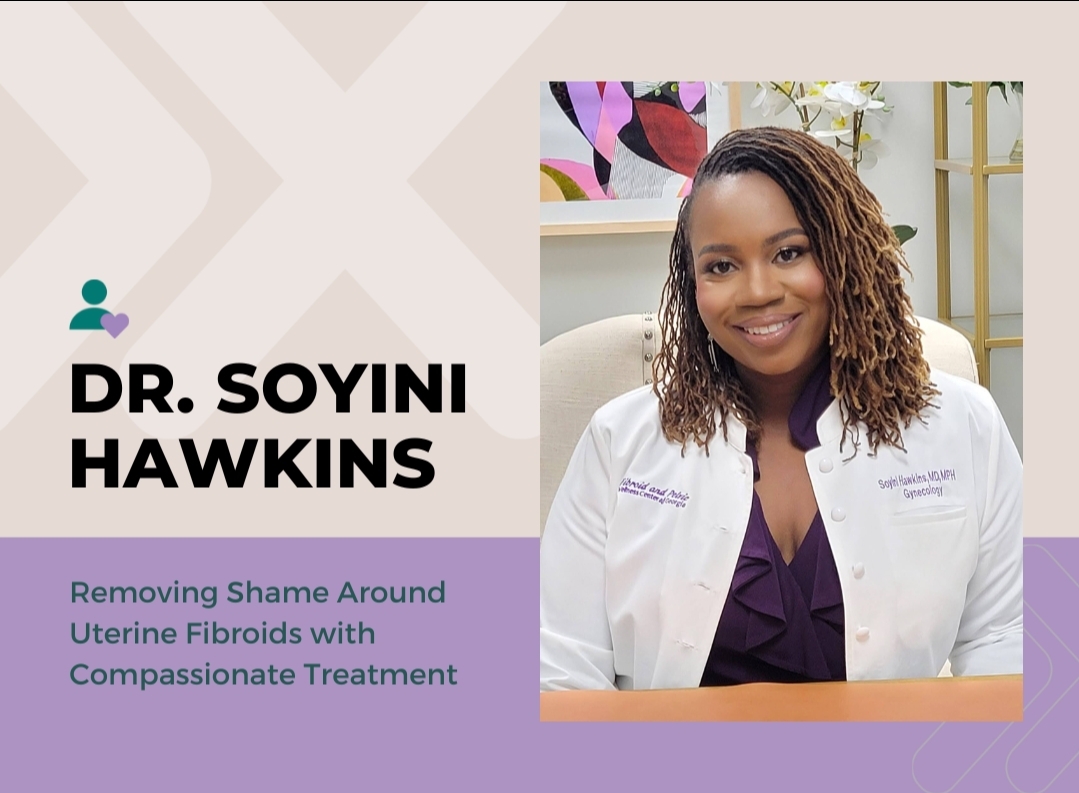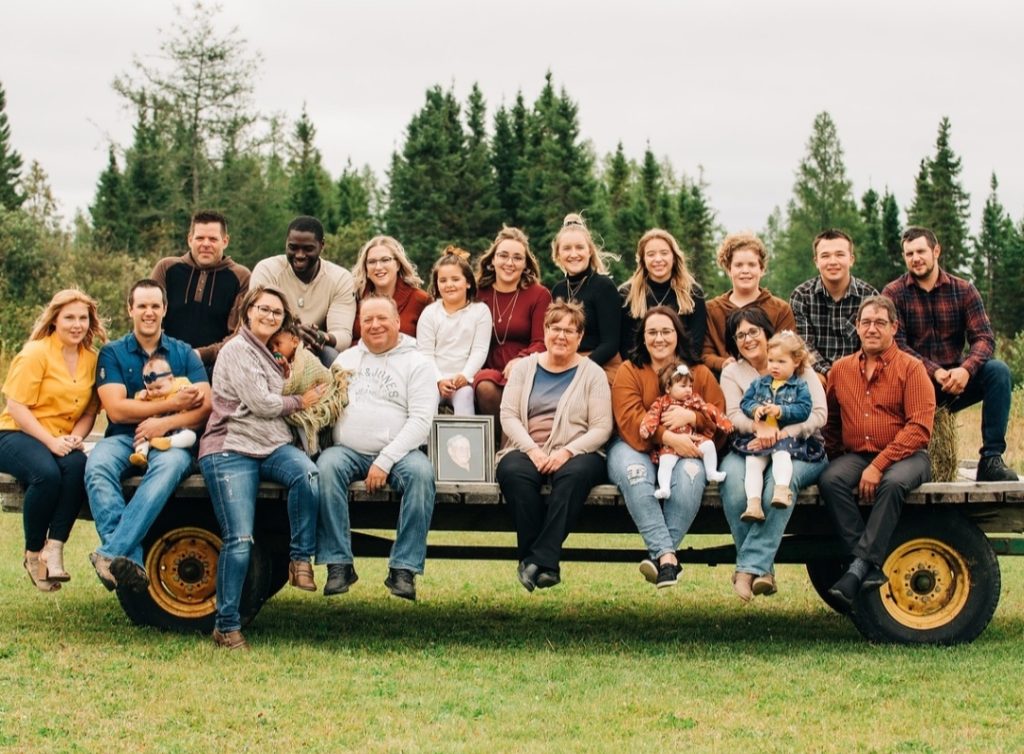As anyone’s calling develops, Dr. Soyini Hawkins MD, MPH, FACOG intuitively always wanted to work in women’s health care, even before she had any real exposure to medicine. She was dissuaded from entering this particular field, but she knew it was a good fit because of the impact on her own life with uterine health. Such as her mom’s preventative routine visits to the gynecologist and her own health journey with a fibroids diagnosis and surgery at a young age. When she opened her own office, the Fibroid and Pelvic Wellness Center of Georgia, she had a passion for providing partner-based health care. This would allow her patients to get the education they needed about their own health and retain hope despite a diagnosis, especially one that included fibroids.
It is more than just a job for Dr. Hawkins because she is able to relate to her patients. She knows how to empower them when they are making their own decisions regarding surgery and adopting a healthy lifestyle. Dr. Hawkins easily reflects on how blessed she is to love her job and have a connection with her patients. It’s her ministry; giving her a way to connect to her purpose. She feeds her patients hope through the pain, making it more gratifying than simply providing them with medicine.
The stigma around “below the belt conversations,” those touching on fibroids and the uterus, creates a boundary of having early conversations with a doctor. Fibroids are fibrous tissue and muscle growths that develop in a woman’s uterus, ranging in size and appearing individually or in clusters. They impact a woman with longer and heavier menstrual bleeding, bloating, and unexplained stretching of the abdominal girth. Typically, only once the symptoms are painful enough will women seek medical help. Dr. Hawkins compares it to the slow realization that smoking cigarettes has a high probability of giving you lung cancer. Even though 80% of women are impacted by fibroids, she says women will start paying attention to it sooner when there is “a shift in the culture to blast this message” and conversations become more mainstream.
The medical field is definitely aware of the impact of fibroids, and this is proven by the vast amount of research already done. Yet it only scratches the surface. A few topics research scientists and doctors have considered are the natural history of fibroids and why Black women may experience them more aggressively; biases around treatment options, especially for young women; impact on fertility; and the connection with endometriosis. Advancements in technology and more medicines to help relieve symptoms are continually being researched. Currently, the range of medicine and surgery options is vast and still growing. For now, a combination of medicine and healthy lifestyle options, depending on what stage a woman’s fibroids are in, mitigate the pain, slow the growth, and may relieve symptoms.
Once a woman goes to see her gynecologist, the possible treatments she goes through ranges from the least invasive to surgically removing the fibroids. If a woman catches the signs of the silent tumor early and/or the fibroids are still small, observation is the most common. Dr. Hawkins admits that observation from most doctors is not at the standard it should be. Since small fibroids don’t necessarily have a huge impact on a woman’s health, some doctors will opt to not do anything about them. However, small fibroids still need to be managed. This may include having regular ultrasounds, improving anemia, and supporting lifestyle changes such as stress management, a diet centered around whole foods, and being mindful of skin and hair products.
If medication is necessary for pain management, options include anti-hormonal, hormonal, or holistic methods. Non-hormonal pills thicken blood levels to decrease blood flow. This makes it a great option since it is only taken in sync with a menstrual cycle and has no impact on her hormones and ability to get pregnant. Another option is GnRH analogs. This is a common therapy used with cancer patients, but it is also effective for women suffering from fibroids. It blocks hormones that grow in fibroids and can even reverse the growth. There has not been much research with hormonal options, so doctors tend to default to the pink pill, i.e., birth control. However, there is not enough research to validate sustained relief from symptoms. Women can also rely on holistic therapies like herbal supplements, acupuncture, massages, and a nutrition-rich diet. These may be unassuming, but they have helped to lessen cramps and improve blood flow.
Being a fellowship-trained Minimally Invasive Gynecologic Surgeon, Dr. Hawkins takes special care in recommending procedures when it becomes necessary. A non-invasive option is available if surgery may be difficult for her patient. Radiofrequency will shrink the size of the fibroids and will resolve symptoms faster and improve menstrual bleeding. Surgical options are more varied. A woman can choose a Traditional Laparoscopic Myomectomy that involves cutting the muscle and/or a hysterectomy, where the uterus and fibroids are completely removed.
Cells plus hormones equal fibroids. So, with a 60% chance for fibroids to come back if the uterus is still intact, healthy lifestyle changes make a huge difference! “This is why a doctor who is not only educated on the topic, but also empowers and encourages, will help a woman throughout the process,” Dr. Hawkins explains. To take proactive actions for uterine health, be communicative with a doctor to know what is normal or not in regard to anemia and menstruation, be attuned with one’s body, and have a knowledge of your family history with fibroids. Building your support team at home and in the doctor’s office will make you feel empowered and educated. Looking at Dr. Hawkins’ own journey as an example, there is hope on the other side with better health and prevention of fibroid growth long term.
Her Nexx Chapter invites you to join our free Community where women from around the world are connecting with each other’s stories, exploring different experiences, and transforming ideas.
The Future of Connection for Women








0 Comments